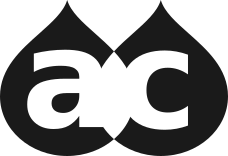In an era where AI can generate thousands of lines of code in seconds, I found myself asking a fundamental question: What makes me valuable as a developer when artificial intelligence can create everything?
While AI tools multiply our capacity to create, perhaps the real value lies not in generating more, but in choosing better. This is something every developer, designer, and team leader needs to hear.
A Principle Rediscovered Across Generations
The concept of "less but better" isn't new. In the 1920s-1930s, architect Mies van der Rohe popularized "Less is More"—a principle that profoundly influenced the Bauhaus school and its core focus on simplicity, rationalism, and functionality that shaped modern design. Designer Dieter Rams later refined it to "less, but better" for the consumer product era.
What strikes me most is how each generation rediscovers this wisdom in their own context. When tools can generate unlimited options instantly, the skill isn't in creating more; it's in knowing what to keep.
Why This Matters Now
From my experience, I've noticed three things that make this principle critical in modern web development. A simple approach is better from a technical, designer, and UX perspective.
Technically, less code means better performance and sustainability. Every unnecessary line of code is technical debt waiting to accumulate. Every extra component is another potential breaking point, another thing to maintain, another load on the user's browser. When we choose simplicity, we're not just making aesthetic decisions—we're making our solutions faster, more reliable, and easier to maintain.
From a design perspective, simple solutions with gradual implementation build trust. Users don't need to see everything we can do in the first interaction. They need to accomplish their immediate goal with confidence. A focused, clear interface tells users we understand what matters to them. Complexity can signal uncertainty—ours, not theirs.
Looking at user experience, I believe people are overwhelmed. They're managing hundreds of tasks, using dozens of tools, drowning in notifications and options. The more we can simplify their interaction with our solutions, the better their experience. This isn't about doing less work—it's about doing the hard work of deciding what truly matters.
Practical Application: The Real Challenge with AI Tools
When we built Palcera.com using AI tools like Claude and Figma, I discovered how easy it is to drown in possibilities. Ask an AI to generate components, and you'll get dozens of variations. Request copy options, and you'll receive paragraphs upon paragraphs. The tools are powerful, but they lack the one thing that matters most—context about what your users actually need.
This is where the real work happens: selecting and guiding toward the minimum viable solution. Not minimum as in "barely functional," but minimum as in "exactly what's needed, and nothing more." This takes time. It requires understanding your users deeply enough to know which of those AI-generated options actually serves them.
When building editorial experiences and user interfaces, this becomes even more critical. People use these tools daily, often alongside hundreds of other responsibilities. Every unnecessary click, every confusing option, every piece of visual clutter is friction they don't need. The editorial tools we build should fade into the background, supporting their work rather than demanding attention.
AI processes information faster than any human and can be remarkably creative, but it's not ready to handle complex strategic decisions. We need professionals to guide these tools, to add the human touch that understands not just what can be built, but what should be built. That's not going to change anytime soon.
The Opportunity Ahead
Here's what excites me about this moment: we can approach the AI era as an opportunity to rebuild our mindset and technical approaches. Right now, we can strip away accumulated complexity and ask: if we were starting fresh today, what would we actually build?
This "rebuild from scratch" mindset is available to us at any time. Not literally rebuilding everything—that would be impractical. But approaching each new project, each new feature, each new interface with fresh eyes. Starting with the core problem we're solving, then adding only what serves that purpose.
The principle of "Less is More" has survived over a century because it addresses something fundamental: clarity and focus create better outcomes than complexity and abundance. In an age of infinite AI-generated possibilities, this truth matters more than ever.
The question isn't whether AI will replace us. The question is whether we'll use these powerful tools to create solutions that truly serve people—or just create more noise in an already overwhelming digital landscape.
I choose simplicity. I choose intention. I choose less, but better.
What will you choose?
A note on AI usage: I used AI assitance to create this blog post for research, validating historical facts, organizing my thoughts, and editing. The ideas and perspective areentirely my own.


Add new comment